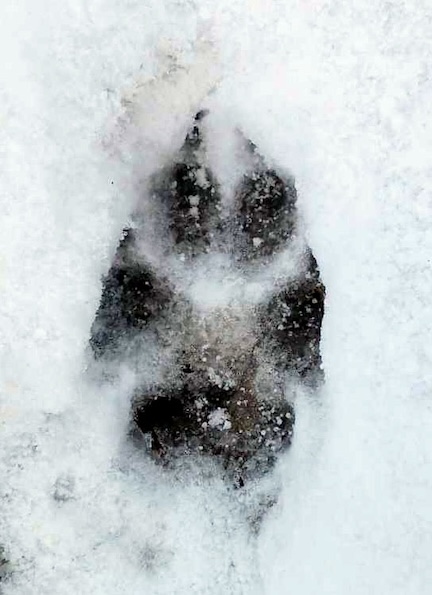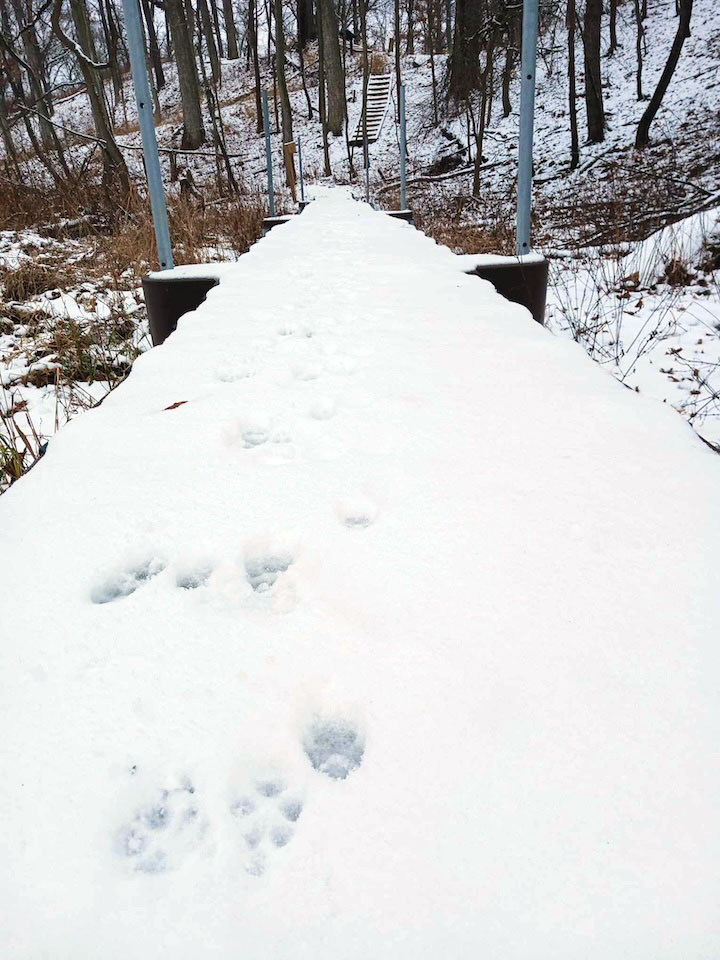Walking in Beauty
January 24, 2024
Signals in the snow
A couple of weeks ago, after the first big snowstorm, a lone coyote took a lap around the .85-mile trail at Brennan Woods.
The deer follow their own trails, but the coyote seemed accustomed to the path pounded by humans and their canine walking partners throughout the summer. Coyote prints can be distinguished from a dog's by the oval shaped paws and compact toes.

In the snow, everyone leaves a calling card, from boot tracks to deer hooves. Identifying the beasts still out circulating on the frozen land can be made easier by process of elimination. Some animals burrow and hibernate during the cold months. Along with reptiles, mammals like groundhogs and skunks hibernate – their heartbeat and body temperature decreasing to a catatonic rest.
When it gets really cold, you don’t often see racoons either; they cuddle up in their dens with their fluffy tails wrapped around them and enter an inactive state called torpor that lasts up to several weeks.
Deer have weather-resistant coats and a store of body fat, allowing them to live off meager forage in the winter. Squirrels hide and bury tree nuts which they search for during their less active season. They weather out the storms in nests built in the trees, made of sticks, moss, grass and leaves.


A squirrel left a perfect imprint after jumping from a tree at Brennan Woods. A squadron of squirrels was out and about near Koeneman Lake.
Their prints in the snow bely their springy stance, and finger-like indentations reveal an obvious dexterity that probably comes in handy when climbing a tree.
Rabbits are also active year round, which is good for the coyote.

The coyote prints seen on the bridge followed the entire trail at Brennan Woods.
Photos and blog by Amy Oberlin
